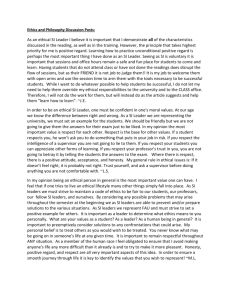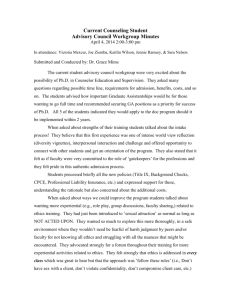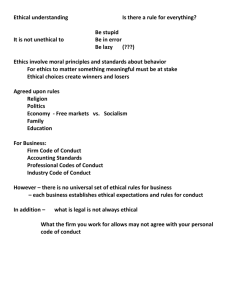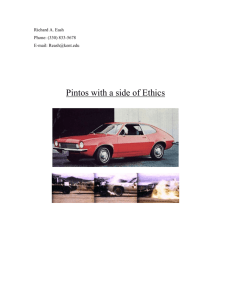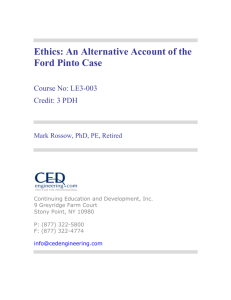Ethics Report
advertisement
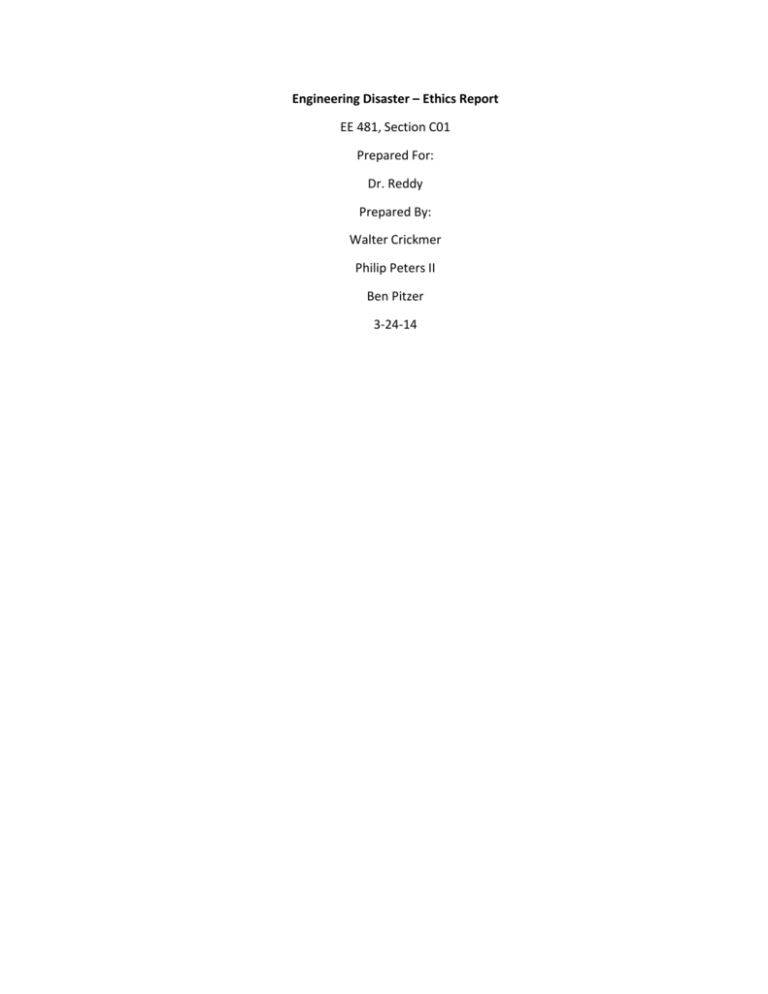
Engineering Disaster – Ethics Report EE 481, Section C01 Prepared For: Dr. Reddy Prepared By: Walter Crickmer Philip Peters II Ben Pitzer 3-24-14 Engineers follow a code of ethics that many professionals follow in order to conduct themselves the best way possible in their profession such that society and the individual benefit the most. The code of ethics protects society from bad engineering practices that can harm the safety, health, and welfare of many people in different ways. Additionally, because society relies on good engineering practice, engineers are compensated and protected from whistle-blowing and other avenues of defense in the engineering code of ethics. Many examples where ethics had a vital role in saving lives have played out in different engineering fields. One such engineering ethical disaster was the Ford Pinto, which was hastily created in order to generate profit and give a competitive edge to the Ford Motor Company. Once out on the roads, these cars were found to be very dangerous in that the rear differential would ignite the fuel tank upon impact in a rear collision at 25 m.p.h. or higher. The car manufacturing steps included in creating a car are: conceptualization, design, prototype, redesign, tooling, and manufacturing. During the tooling phase, the car was found to have this gas tank ignition problem and the car was still put out on the assembly line to be mass-manufactured. The President Lee Lacocca, gave the engineers a manual that outlined the specifications and cost of the car once it was out on the line; safety was not included in the specifications and the U.S. government had no rear-end collision requirements for the auto industry. After these cars were distributed, many people began to have car wrecks and the Ford Pinto was found to explode on collision, ignite, or lock the doors when the rear was hit. The engineers in practice knew about the problem and didn’t report it to the President at any point during the manufacturing of the Pinto. The reason they didn’t tell the company to give them more time and redesign the car was that they feared being fired by their employer. Several ethical issues arose due to this situation. By not keeping the safety of the consumer a priority in their company Ford not only sullied their reputation, but was the cause of several deaths and severe injuries. Another ethical issue that came to light after the car was allowed to be sold to the public was that Ford knew about the defect of their vehicle and failed to issue a recall. By not issuing a recall they deceived the public and maintained that the vehicle was safe. The engineers of the company specifically broke one key ethical idea. The engineers knew about the defect of the vehicle before any car had left to be sold, but did not report the issue to the executives for fear of unemployment. By doing this they were not faithful agents to their employer and broke one of the fundamental cannons of engineering. In reviewing what occurred in the ford pinto disaster, the group determined that for this project to be adverted someone would have had to be a whistleblower. This is due to the ethical problem arising in the engineering department, in which none of the engineers would go against each other and tell someone their results from the tests performed. If someone had come forth and told what was going on, the company could have halted production and corrected the issues. There was also another point in time when the company could have corrected this issue. This occurred when the disaster was going on – cars were exploding after a collision or crash. The executives of the company could have dug deeper into the reasons that were causing the explosions to occur. If they had delved deep enough they could have seen that the deadlines for putting the cars on the market were too short and shortcuts were taken. With this information the company could have issued a recall and averted any further damage or lost lives. Fused-filament fabrication 3D modeling has its own ethical concerns for several reasons. The engineers designing the project should only practice services in the area of their competence. Proper and thorough testing of this device is needed in order to accommodate this gap and ensure that there is no bad design. Additionally, the nozzle operates at a temperature of 250°C and the heating bed at 100°C. In addition to high temperatures, the printer itself has moving arms in an open space that pose a threat to people and animals that get in the way of the different arms. The thermoformed plastic, as well, holds a danger to health given that it releases small traces of airborne ABS (acrylonitrile butadiene styrene) plastic or PLA (polylactic acid). The first engineering ethical canon applies such that engineers will hold paramount the health, safety, and general welfare of the public. Without this canon, many safety features with this project would be neglected or even remain un-researched. In order to accommodate this problem, a shell will surround the machine with a door to access the printed materials and a filter that can operate at the end of each print to filter out harmful airborne particles. Research has shown that these airborne particles are non-threatening, but it is a very marketable approach given that many other 3D printers of this type are not enclosed. Sometimes, ethical approaches to engineering applications and business can be beneficial as an educated consumer population demands materials and products from reliable, safe, and ethical companies. Cost isn’t always the prime motivator of consumers in many businesses. By applying ethical principles into design, a better product can be created and lawsuits can be avoided. Engineering ethics should be employed in every engineering application.





